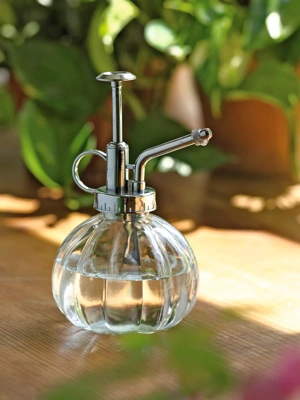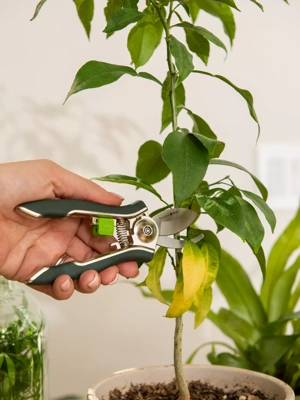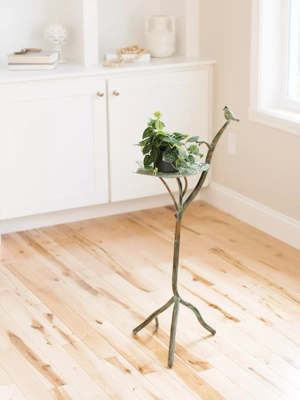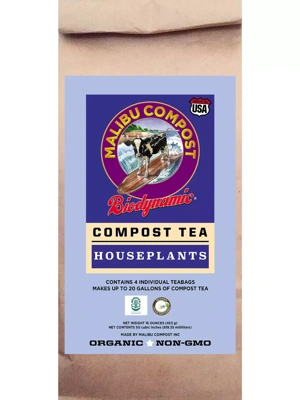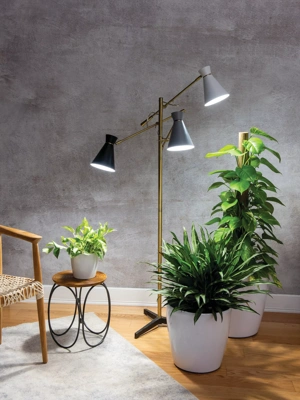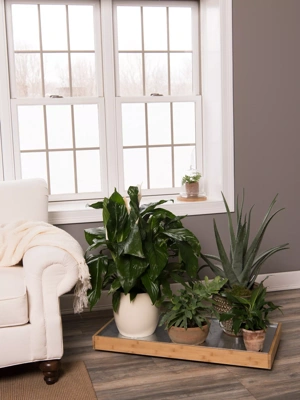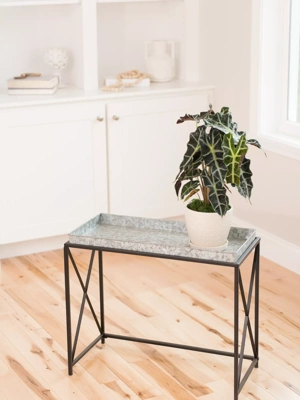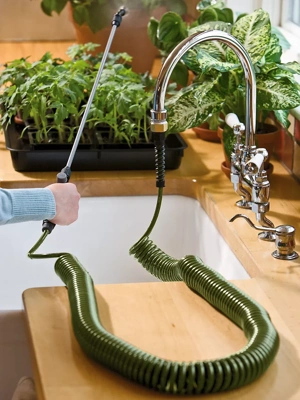How to Grow & Care for a Dracaena
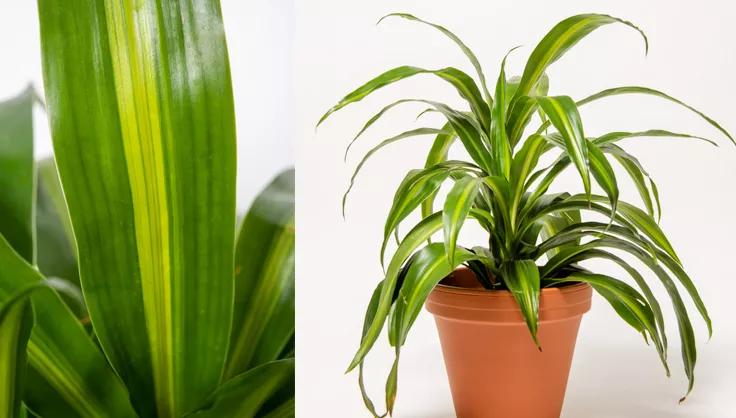
Types of Dracaena to Try
Dracaenas come in various shapes, sizes, and colors. There are dozens of species, but a relatively small percentage are commercially cultivated as houseplants:
Dracaena marginata: known as the Dragon Tree, this plant has spiky, grass-shaped leaves in shades of green.
Dracaena marginata 'Tricolor': known as the Three Colored Dragon Tree, this plant features slim leaves in a stunning mix of red, green, and white stripes
Dracaena fragrans: wider leaves than D. marginata, this plant is commonly called Corn Plant
Dracaena fragrans ‘Lemon Lime’: a cultivar of Corn Plant featuring vibrant green and yellow striped leaves
Dracaena deremensis ‘Warneckii’: striking white or cream stripes
Best Growing Conditions for Dracaenas
Light
Dracaenas thrive in medium to low light conditions, making them perfect for indoor settings. While they can endure some direct sunlight, excessive exposure can scorch their leaves. A spot near an east or north-facing window proves ideal.
Soil
Skip the heavy, overly rich soil —these plants prefer well-draining potting mix. A mix of potting soil, peat moss, and perlite or sand works well.
Humidity
Dracaena aren't particular about their humidity. Standard household humidity and temperature will work just fine — consider moving to a humid bathroom or kitchen if leaf tips appear brown, or you have especially dry air.
Watch and learn how to care for Dracaena, as well as another easy houseplant, philodendron, in the video below!
How to Care for Dracaena Plants
Watering
Water Dracaenas when the top inch of soil feels dry. They are somewhat drought-tolerant but do best with consistent, moderate watering. Be cautious of overwatering, as it can lead to root rot.
Fertilizing
This plant has relatively low nutrient needs, and does not absolutely require fertilizer. If you do choose to fertilize, aim for every few weeks in the spring and summer with a well-balanced plant food at half the recommended strength. No food is necessary during the winter when plant growth naturally slows. Always make sure the soil is damp before applying any fertilizer.
Pruning
Maintain shape and size through pruning — prune just above a leaf node to encourage shorter, but bushier, fuller growth. Trim back any long, unruly stalks or yellowing leaves using clean, sharp scissors or pruning shears.
Repotting
Repot Dracaenas every two to three years or when they become root-bound. Spring or early summer is the best time to repot. Choose a pot that's slightly larger than the current one with good drainage.
Propagation
Propagate Dracaenas by stem cuttings. Put the cutting in a glass of water, and wait for roots to develop. Allow roots to grow for about an inch before planting it in the soil mix. Propagate during the summer for best propagation results.
Common Problems with Dracaenas
Pests and Diseases
Watch out for common pests like spider mites, mealybugs, and scale insects. Overwatering can lead to root rot. Regular inspections and timely treatment are crucial for maintaining dracaena health.
Toxicity
Despite being distantly related to asparagus, Dracaenas are toxic to pets, particularly cats and dogs, if ingested. Their leaves contain compounds that can cause vomiting, drooling, and lack of appetite. Keep these plants out of reach of pets.
Dracaenas FAQs
Q: Why are the tips of my Dracaena's leaves turning brown?
A: Brown leaf tips can be a sign of low humidity or over-fertilizing your dracaena. Boost humidity by adding a humidifier to the room, or move your dracaena to a steamy bathroom. Be sure to fertilize during the active growing season (spring and summer) and let your plant chill during the dormant winter months.
Q: Can my dracaena be placed outdoors?
A: Yes! Provided you shield it from intense, harsh sunlight and position it in partial sun (such as beneath covered patios or porches), your dracaena will appreciate the "outside time". Keep in mind that outdoor conditions will require more frequent watering, particularly in hot or windy weather. Dracaena are not a fan of cold temperatures, so move your plant back indoors when nighttime temperatures dip below 55 degrees Fahrenheit.
Q: Can Dracaenas survive in low light?
A: Yes, dracaenas can tolerate low light, making them ideal for spaces with limited natural light. Note: too little light for extended periods of time can slow growth and diminish leaf color in variegated varieties.
Nearly indestructible and featuring fantastic foliage, dracaena are a houseplant must-have!
Last updated: 05/09/2024
Print this Article:
Related items
Get the Dirt
Stay up to date on new articles and advice. Please fill out the information below.

